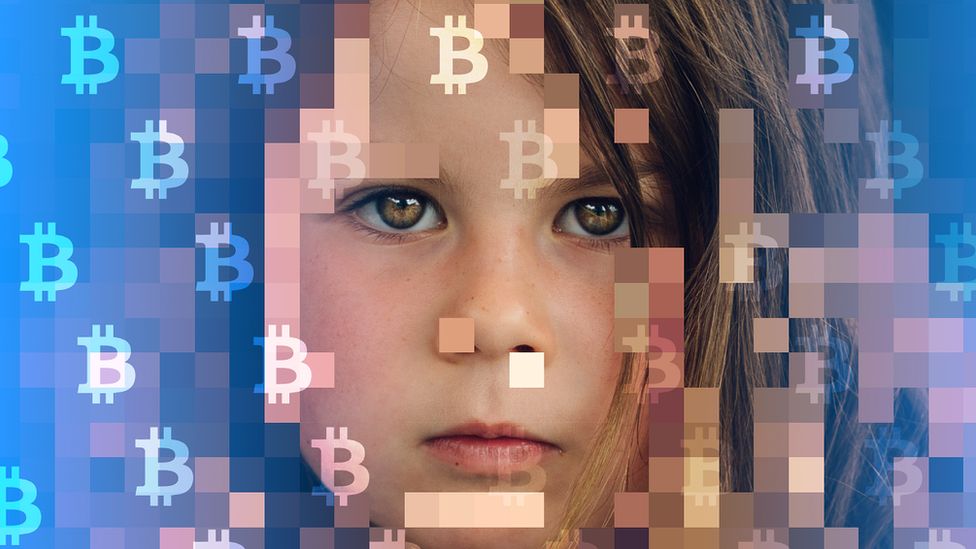Child abuse images hidden in crypto-currency blockchain
- Published

Images of child sexual abuse have been found embedded in the system powering a high-profile crypto-currency.
Somebody added the illegal images to the core ledger of Bitcoin Satoshi Vision (BSV) by using a payment processor.
This ledger, known as the blockchain, is a running record of crypto-currency transactions, shared among users of the platform.
Experts have warned that abuse of blockchain tech is a growing problem.
How did this happen?
The blockchain is central to the way many crypto-currencies such as Bitcoin work and in theory stops people making fake transactions or manipulating their account balance.
One key feature of the blockchain is that information added to it cannot be changed without significant effort.
In January, the amount of data that could be added to the BSV blockchain was increased significantly.
Before that, people could generally add only short chunks of text or web links to the blockchain.
But now it is possible to add full images in an encoded format.
Payment system Money Button said its service had been used to post the illegal images on the BSV blockchain in early February.
UK laws state that the simple possession of indecent photographs of children is an offence and any distribution of such material can warrant a longer prison sentence.
Zero tolerance
Jimmy Nguyen, founder of crypto-cash company nChain, which oversees the BSV currency, said it had "zero tolerance" for illegal use of the system.
"The Bitcoin SV blockchain is not a place for criminal activity - and if you use it for illegal purposes, you will leave a digitally signed evidence trail that cannot be erased," he told BBC News.
"We stand ready to work with global law enforcement authorities to stamp out this and any other illegal misuse of Bitcoin."
Ryan Charles, founder of Money Button, said: "Since most businesses increased the size of allowed data recently, making it possible to post large files, criminals are trying to push the limits."
Easily accessible
The abuse images embedded in the BSV blockchain were spotted when they appeared on Bitcoinfiles.org.
The website lets people browse a rolling list of messages and other content added to the blockchain.
The appearance of the images prompted police to investigate. Bitcoinfiles.org has since closed the blockchain browsing service.
In addition, Money Button has banned the user that uploaded the material.
It has also put in place filtering systems to spot when anyone tries to upload similar content. Money Button is part-funded by nChain.
"Criminals should understand that everything on the blockchain is signed, time-stamped, and linked to everything else," said Mr Charles.
"We have all the information we need to track down criminals and prosecute them."
Information about the person who uploaded the images has been passed to the authorities.
'Not yet mature'
Eric Erstu, who runs the Cryptograffiti website that lets people read messages embedded in the Bitcoin blockchain, said: "There is nothing that could have prevented this from happening in other blockchains.
"It takes special care to seek and find illegal content from any block chain, as it is not a trivial process," he told BBC News.
"As for law enforcement, they would have to do the good old detective work in hope of tracking down the person who uploaded the illegal content on the block chain.
"Since everything you do on the blockchain is immutable, tracking down criminals is not too difficult."
Blockchain researcher Roman Matzutt, from the University of Aachen, in Germany, who has studied the problem of people uploading illegal content to the blockchain, warned it had become a "pressing issue".
He said there was "ongoing research" to find ways to remove such content from blockchains but these were "not yet mature".
And there was a "lack of sufficient sustainable solutions apart from making content insertion into public blockchains hard".
- Published4 February 2019
- Published27 January 2019
- Published21 March 2018
- Published19 November 2018